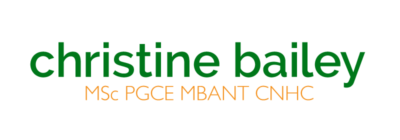A Functional Approach to Acne
Everyone suffers from spots occasionally but when it is persistent it can be a big blow to your confidence. Most of us associate acne with the teenage years but the truth is it can affect us at any age. Conventional acne treatments can be expensive and many have a number of side effects including dryness and irritation.
Taking a functional nutrition approach looks at the potential underlying causes for acne and integrates dietary and lifestyle strategies to help address any imbalances.
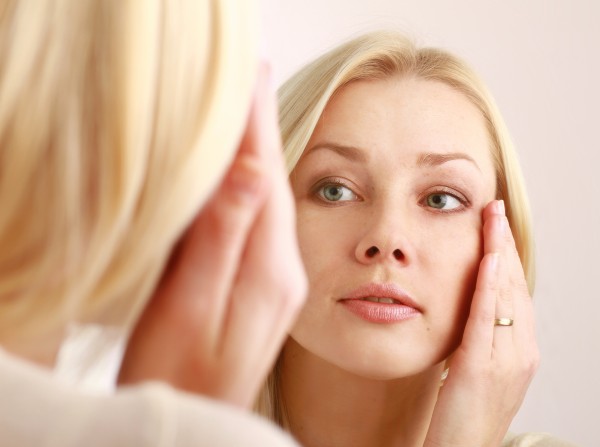
How Does Acne Develop?
Blemishes arise when hair follicles in the skin become blocked with oils and particles such as dead skin cells and bacteria. Sebaceous glands attached to hair follicles secrete an oil-based substance known as sebum. Sebum normally helps moisturize skin and keep it supple. However, when there is excess sebum produced, the follicle can become blocked. Sometimes, bacteria called Propionibacterium acnes that normally reside in the skin interact with the sebum trapped in a clogged follicle and lead to inflammation. So anything that clogs pores, leads to the rapid division of skin cells, and/or creates or worsens infection and inflammation will contribute to blemishes.
For some a combination of Cutibacterium (Propionibacterium) acnes and Staphylococcus epidermidis have been recognized as pus-forming bacteria triggering inflammation in acne. Research has firmly established that acne is an inflammatory condition.
There are different types of acne: Acne vulgaris,typically presents in the t-zone on your face, with a mix of whiteheads, blackheads and general redness around the affected area. Acne conglobata, also known as Cystic Acne, which are large, hard raised bumps under the skin that may never erupt into a pimple. These cystic forms of acne tend to penetrate deeper into the skin layers and are often painful to touch. This type of acne is typically more persistent and often harder to tackle.
Hormonal Acne
A common feature of hormonal acne is breakouts on the chin and jawline area. The acne in this area is caused by sebaceous glands producing excess oil (sebum) due to hormonal fluctuations associated with the menstrual cycle. The sebum gets trapped in the follicle leading to clogged pores and then bacteria (Propionibacterium acnes) can begin to proliferate – this can lead to bacterial biofilms and colonies, and finally the release of proinflammatory mediators to the skin which results in the production of cysts and pimples.
There are actually a number of hormones involved:
Androgens
Oestrogens
Progesterone
Insulin and insulin-like growth factor-1,
CRH, adrenocorticotropic hormone (ACTH),
Melanocortins, glucocorticoids, and growth hormone (GH).
Oestrogen dominance occurs when oestrogen levels are in excess relative to progesterone. Oestrogen and progesterone work together fluctuating throughout the body’s hormonal cycle, and a delicate balance between the hormones is required to maintain health. A disruption in the oestrogen to progesterone balance can mean that you have normal oestrogen and low progesterone, or high oestrogen and normal progesterone. Oestrogen dominance can also occur more frequently during perimenopause as cycles shorten. One of the consequences can often be skin outbreaks and acne.
For women who notice a pattern with their menstrual cycle it is typically fluctuations in hormones oestrogen, progesterone, and testosterone that are major players. Oestrogen is responsible for the production of elastin, collagen, and hyaluronic Acid which contributes to your skin’s moisture retention. This is one of the reasons why many women notice skin changes around perimenopause. The hormone progesterone stimulates the production of sebum which may increase oiliness and make you more prone to hormonal acne just before your bleed.
Androgen excess is characterised by excess androgenic hormone testosterone that increases the production of sebum (oil) in the skin, and overproduction of keratin – a protein in skin cells – that can block pores. There can be a number of factors involved including underlying conditions such as PCOS. In other people genetic variations that increase the activity of enzyme 5-alpha-reductase that converts testosterone into the more potent dihydrotestosterone form can also be a factor and stress – this can contribute to more androgen secretion.
Testosterone is well known to stimulate the oil glands and there is a high density of oil glands clustered along the jawline and chin area. It is therefore common to see an increase in jawline acne around the time of your menstrual cycle since your hormone levels are fluctuating and creating an androgen dominant effect. In addition to the jawline, hormonal breakouts are also common on the sides of the face and the neck
Stress is well known to play a role. Studies have shown an association with Increased stress severity and acne severity. Chronic stress increases the secretion of adrenal androgens and results in sebaceous hyperplasia. Activation of the hypothalamic–pituitary–adrenal (HPA) axis is the main adaptive response to systemic stress leading to increased levels of cortisol . Corticotropinreleasing hormone (CRH) is a central coordinator for neuroendocrine and behavioural responses to stress. CRH stimulates sebaceous gland lipid production and steroidogenesis, which contributes to acne.
Other factors can cause acne such as genetics, allergic reactions, medication and diet.For example IGF-1 G>A and MTHFR C677T polymorphisms have been studied. CYP19A <G rs700518 enzymes have also been studied for its effect on hormone level. So detoxification / methylation pathways may be important.
Acne & food – what is the connection?
A number of studies suggest certain types of food can worsen or improve acne. While it may not be the only cause it is worth looking at making dietary changes to see if it helps.
Some people are likely sensitive to changes in insulin-like growth factor-1 (IGF-1) which can be in high glycemic index (high sugar) diets, or diets containing dairy products that contain IGF-1. Receptors for IGF-1 are present in the sebaceous gland in the skin that’s responsible for producing sebum. When IGF-1 binds to these receptors, it stimulates sebum production. This is why high carbohydrate diets may worsen your symptoms and research suggests there may be an association. Avoid quick releasing carbs (e.g fruit juices, cakes, alcohol, biscuits, sweet foods, refined white grains) and processed foods as these lead to a sudden rise in blood sugar and the production of excess insulin. This results in the production of certain growth factors that stimulate sebum production, encourage skin cell manufacture and exacerbate hormone imbalances that underlie acne.
For other dairy is a trigger so watch your milk and dairy consumption and consider switching to dairy free alternatives.
The other diet-related factor that can play a role in acne is food sensitivities. That is where the body creates an immune-mediated response to a food (or foods); however, sensitivities tend to simply make acne worse, rather than cause it. Work with a professional to identify any particular triggers.
Getting the right type of fats
The type and quantity of fat in your diet is equally important. Certain fats particularly saturated and hydrogenated fats; such as those found in red meat, dairy products and processed foods are known to promote inflammation. Inflammation is at the heart of such skin flare ups so getting the right balance of omega 3 and omega 6 fats in your diet is important.
Detoxification & Gut Health
On top of this, a high toxic load can burden the liver pathways, putting extra pressure on the detoxification function of the skin. This may explain why there appears to be a link between a healthy gut and good skin. Having an optimal level of beneficial bacteria supports digestion, detoxification and prevents harmful bacteria to flourish which can promote inflammation. So try adding in fermented foods like kefir, sauerkraut and kimchi rich in beneficial bacteria.
Your body has sophisticated detoxification pathways made up of your liver and gallbladder, kidneys and urinary tract, bowels, lungs, lymphatic system, and skin. Each of these organs plays a critical role in keeping hormones in balance – when these are not optimal the result may be hormone imbalances triggering skin breakouts.
From a functional perspective having an understanding of the detoxification pathways can be helpful. Genetic variations can impact different pathways and toxic load. Pinpointing what pathways in the detoxification system are under-performing will determine what treatment is required. Whether that’s to support digestion to eliminate constipation, or provide herbs and nutrients to support the liver’s ability to break down and eliminate hormones, to ensuring you stay hydrated.
In many cases undertaking a comprehensive stool test can be useful to look for evidence of gut dysbiosis which may increase circulation of certain hormones via raised enzyme activity like beta glucoronidase. Pathogens can also increase inflammation and toxic load on the body.
Best Foods & Nutrients for Acne
When you have a better understanding of your own triggers and underlying causes you are in a position to make changes to improve your skin’s health and integrity. There are a number of nutrients the skin needs to speed up healing and restore balance such as vitamin A, Zinc, and essential fatty acids. Niacinamide and hydroquinone, are also often used topically.
Here are the top foods and nutrients for great flawless skin
Oily Fish
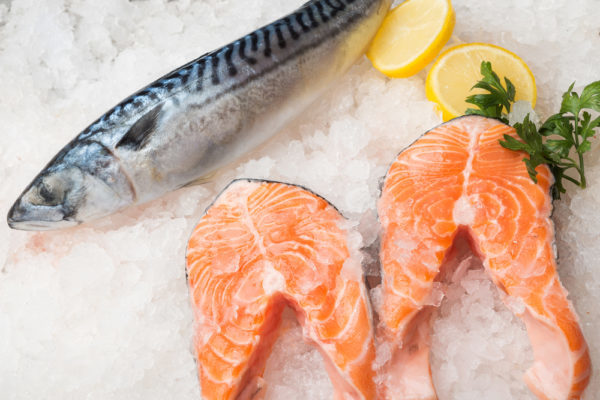
Nourish your skin with plenty of anti-inflammatory omega 3 fats. Found in oily fish (sardines, mackerel, trout, salmon, herring, prawns), walnuts, leafy greens, chia seeds and flaxseed. Try and include oily fish 3 times a week and 1-2tbsp of seeds daily.
Avocado
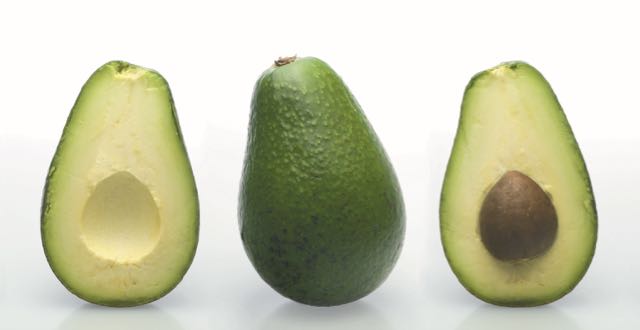
Avocados are rich in anti-inflammatory monounsaturated fats and plenty of vitamin E to keep the skin looking glowing and fresh. Add in some olives too – another good source of monounsaturated fats.
Fermented Foods
Our gut is home to countless bacteria and if these are out of balance it can promote inflammation and poor detoxification. This is especially relevant if you have taken antibiotics recently. By including fermented foods like raw sauerkraut, kefir, kimchi, miso, kombucha and yogurt naturally rich in beneficial bacteria you will support a healthy gut flora and with it may improve the appearance of your skin.
Herbs and Spices

Not only do they add a wonderful flavour to dishes, many herbs and spices are packed with protective antioxidants and have potent anti-inflammatory and anti-microbial properties. Try and include turmeric, ginger, garlic, cinnamon, oregano, rosemary and other herbs to your daily meals.
Green Tea
Green tea especially matcha green powder is packed with antioxidants known as catechins. Not only is a great anti-inflammatory drink but studies suggest it may acne when applied topically. This may be linked to the anti-bacterial properties of many of the phytonutrients such as tannins and flavonoids. Studies have shown 2-3% solution can be effective. Simply seep green tea in boiling water for 5 minutes then allow to cool before applying it to the face.
Berries
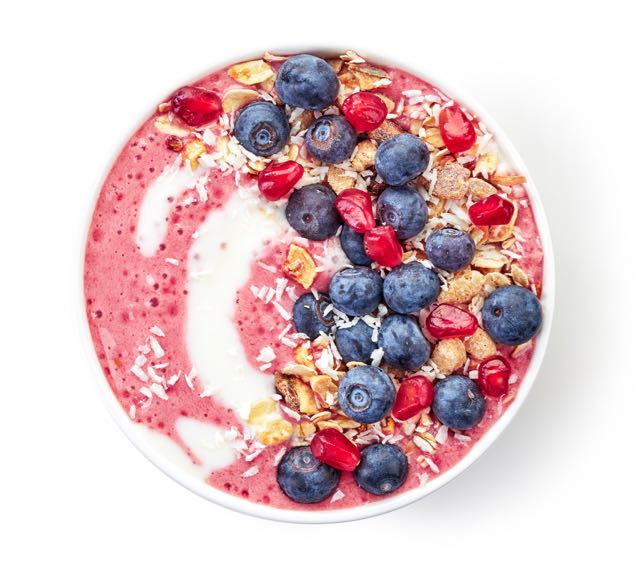
Berries are loaded with antioxidants to protect our skin and lower inflammation plus vitamin C which is essential for collagen production and gives our skin a fresh glow.
Leafy greens
Greens such as kale, spinach, broccoli, watercress, collards, spring greens, romaine lettuce are all rich in antioxidants and nutrients important for the skin including vitamins A and C plus soluble fibre to support digestion and detoxification. Try to include at least 1 cup of greens daily in your diet.
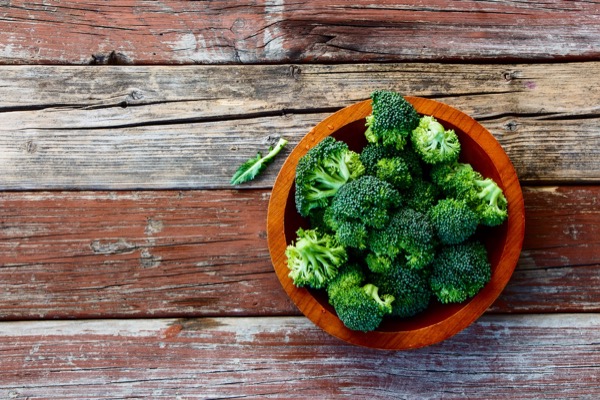
Don’t forget water
Clear skin starts from within, and one of the best, cheapest and most effective ways to get there is to help your body flush out toxins by drink plenty of water. Drinking water through the day will help replenishes water in the cells and keep your skin looking plump and fresh looking.
Specific Nutritional Support
Zinc
Zinc is a mineral with several properties that may help relieve acne.Individuals with acne tend to have lower zinc levels than people with clear skin. It is known for its anti-inflammatory and antioxidant actions and antibacterial effects against P. acnes. Good sources of zinc include seafood, nuts and seeds especially pumpkin seeds and mushrooms.
Niacin
Niacinamide is a compound derived from niacin (vitamin B3). It is known for its anti-inflammatory action within the skin and appears to reduce spots as well as improve healing. Niacin rich foods include fish, seafood, poultry, peanuts and beef.
Vitamin A
Vitamin A is often used topically in creams to improve skin health and is a crucial vitamin for improving skin health and lowering inflammation. Try and include vitamin A and beta carotene rich foods such as liver, eggs, sweet potato, butternut squash, pumpkin, carrots, and leafy green vegetables.
Selenium
Selenium can be helpful for healing scars and lowering inflammation. Fish such as cod, tuna, halibut, sardines, and salmon are excellent sources, along with eggs, liver and meats like turkey and lamb. Brazil nuts are also a rich in selenium, and just two brazil nuts a day will give you the 200 micrograms necessary for an adequate intake.
Vitamin E
Vitamin E is the most abundant fat-soluble antioxidant found in the skin. It is secreted on the skin surface through the sebum and is important for protecting our skin. Good sources include nuts and seeds so try and eat a handful each day.
DIM
Diindolylmethane (DIM) is a compound created when you digest cruciferous vegetables, such as broccoli or Brussels sprouts. DIM can support detoxification of oestrogen making it useful for PMS symptoms as well as addressing the balance between oestrogen and progesterone. DIM has been shown to inhibit an enzyme called aromatase, which converts testosterone to estrogen. Used as a supplement this may help address underlying hormone imbalances.
Omega 3 Fats
Docosahexaenoic acid (DHA) is an omega 3 essential fatty acid present in the skin. Supplementation of DHA may reduce insulin-like-growth factor (IGF-1) in the skin which may in turn reduce sebum production and outbreaks. Consider taking an omega 3 supplement especially if you do not eat oily fish.
Lifestyle
As well as your diet there are some simple steps you can take to help your skin look its best.
Here are some top tips
- Wash face gently with unscented, oil-free cleansers and keep skin clean. Do not over cleanse your skin. Use more gentle, soothing, moisturising types of skincare treatments. If you can’t seem to break away from using antibacterials, use it in a spot like fashion – apply it with a q-tip just to those areas you want to apply it.
- Use oil-free moisturizers.
- Use cosmetics sparingly. Use only hypoallergenic, oil-free cosmetics.
- Resist the urge to squeeze, scratch, or pick at acne lesions.
- Exfoliation treatments may help reduce the appearance of scars
- Try natural topical remedies such as diluted tea tree oil, aloe vera and witch hazel
- Exercise daily. Exercise improves circulation, regulates hormones and helps reduce stress.
